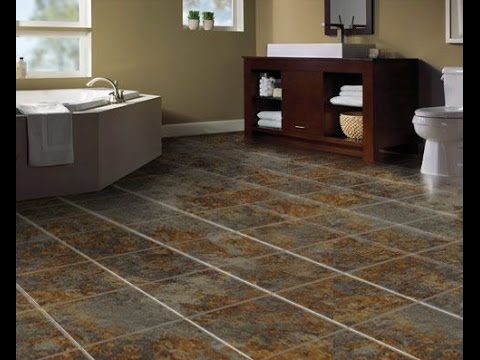
Floating tiles can seem like a very attractive tiling option but be sure to read this before making any decisions.
Porcelain tiles are an unequaled top pick for excellent, solid floors, especially in restrooms and kitchens. Be that as it may, up to this point, proficient expertise was needed because of the materials and expertise associated with installing them. That is changing with a moderately new, more DIY-accommodating item known as floating tile, which is laid utilizing a much less difficult, quicker, and less untidy process. On the off chance that you’ve been needing a tile floor however, because of the trouble of installing your own customary tile, you might be fascinated by the possibility of a floating tile floor. Remember, notwithstanding, that reviews are kind of mixed. Read on to learn what is the issue here and whether it’s ideal for your flooring venture.
Difference Between Floating Tiles and Conventional Flooring
As both conventional and floating tiles are made of porcelain, you might think that they are very similar. However, to install standard tile floors, you need to possess some significant expertise. Tiles are first installed in a layer of slightly set mortar, which safely joins them to a solid board. A supporter board is also required with another extra mortar layer. The work that needs to be done here is extremely time consuming, and expert tile installers go through years sharpening their craft.
Floating tiles come pre-joined to solid rubber treated bases that interlock with each other. This streamlines styled tile installation does not require any implant of the tiles in mortar bases,it also comes with an interlocking framework that makes grout lines uniformed across the entire floor. They’re designated “floating” since they don’t join to the subfloor. At the point when accurately installed, a floating tile floor looks as smoothly and exactly as standard tiles.
Advantages and disadvantages of a Floating Tile Floor
A couple of early forms of floating tiles that came out around 2010 didn’t exactly meet expectations because of a lot of breaking and the tiles isolating from their rubber treated bases, so their manufacturers halted production. As of late, floating tiles were once again introduced to the market and, while installation is surely simple, not all shoppers have been content with the outcomes. Here’s a gander at the preferences and disadvantages of the present floating tiles.
Advantages
- No compelling reason to blend or scoop mortar (one of the more troublesome parts of laying standard tile).
- Avoids grout lines getting lopsided. Floating tiles ensure uniformed grout lines.
- Can easily be installed on top of alternate strong decks, for example, vinyls, tile floors, and cement.
- Can be installed straightforwardly over the current subfloor.
- Because of the interlocked nature of floating tiles, it is very easy to keep their top edges level. On standard tile floors, the top edges may not generally be entirely level, normally due to something over the top or too little mortar underneath particular tiles.
CONS
- Grouting is still between the tiles.
- Cracks are a typical grumbling from property holders. Since floating tiles are not upheld with a bed of mortar, the heaviness of weighty furnishings—or even the heaviness of a grown-up strolling across the floor—has been known to break tile.
- Floating tiles are accessible in restricted nonpartisan tones, for example, shades of tan, beige, and dark, so interior planning decisions are restricted.
- Floating tiles are in terms of cost. Standard tiles run somewhere in the range of $1.50 to $10 per square foot, in view of value and plan, and expert installation can add another $5 to $8 per square foot.
- Proper estimating and tile-cutting abilities are as yet needed to make a uniform layout.
- Grout is porous, and water left remaining on the floor may leak downwards and influence the subfloor, particularly if the grout breaks (something property holders have revealed). This isn’t an issue with standard tile in light of the fact that the solid sponsor board layer shields the subfloor from harm from moisture.Floating Tile Subfloor Requirements
Floating tile producers specify that the subfloor should fulfill guideline floor diversion requirements. The measure of redirection in your floor ought to be dictated by a learned professional or an architect. In the event that the floor framework has an excessive amount of development, it ought to be strengthened prior to the introduction of floating tiles. Inability to fix these issues may bring about broken floating tiles.





